Hand-Painted Tarocchi Cards
Hand-painted Tarocchi cards sometimes known as ‘Charles VI tarot’, North Italy, 1475-1500.
XV century hand-painted and gilded Tarocchi cards, so-called ‘Charles VI tarot’ or sometimes the Grigonneur deck.
Note: this set has been named "Tarots of Charles VI" or Grigonneur cards owing to a misinterpretation of an account book entry in 1392 describing a payment of 56 sols of Paris to the artist Jacquemin Gringonneur for “three packs of cards gilded, coloured, and ornamented with various designs, for the amusement of our lord the king,” intended for Charles VI (but which have not survived). This myth was perpetuated, and further elaborated, for some time, even by respected scholars.
These intelligently designed cards are reputed to have belonged to a royal tutor and their content appears to justify that legend. Each of the images is designed as a multi-faceted mnemonic figure, in which one of the major astronomical figures is represented according to both western and eastern literary allusions, and details in the image reference, particularly, the 'Arab' star-names which were introduced into the culture of Latin Europe from the twelfth-century onwards. Thus the figure of Orion is depicted as the Biblical 'fool' but the details include the asterism known (among other names) as the 'String of Pearls' in Arabic. In addition, each of these figures has a place on earth associated with it. The 'hermit' for example is an image of Canopus according to the traditional lore which sees him/it as a hesitant martial figure, while the landscape refers to Canopus as Egypt's port and its lighthouse (the Pharos was not the only lighthouse marking an Egyptian port).
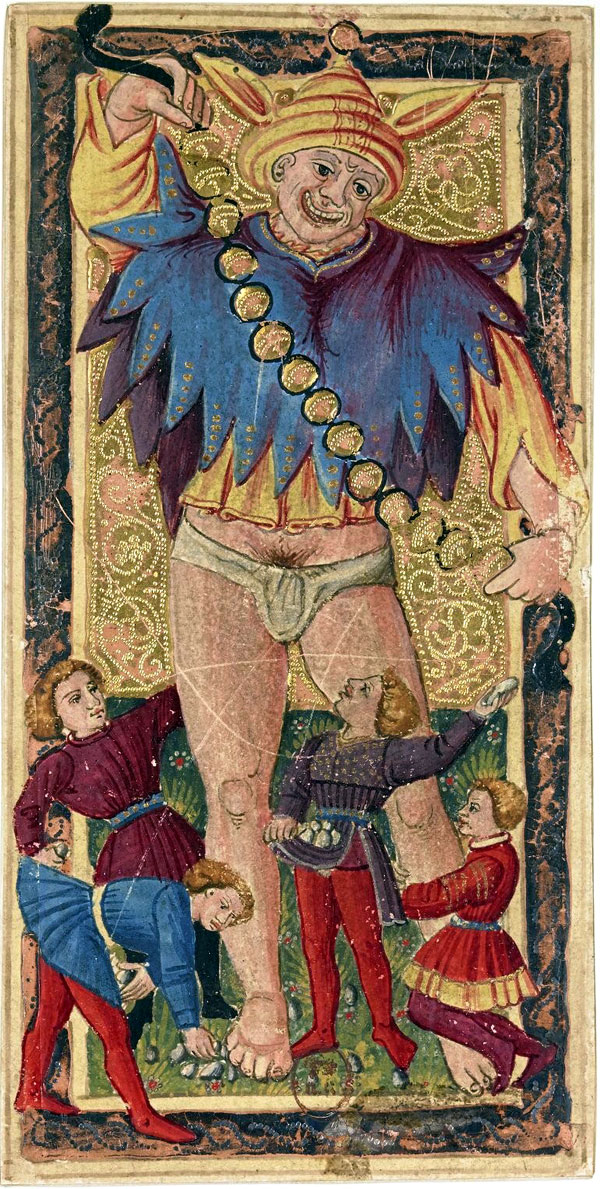
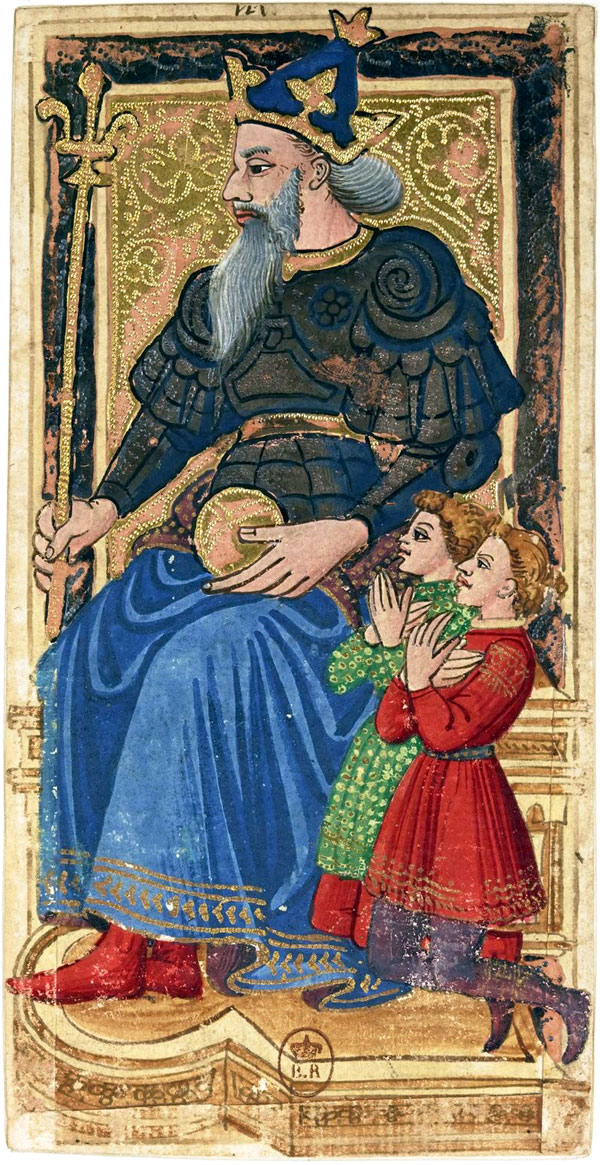
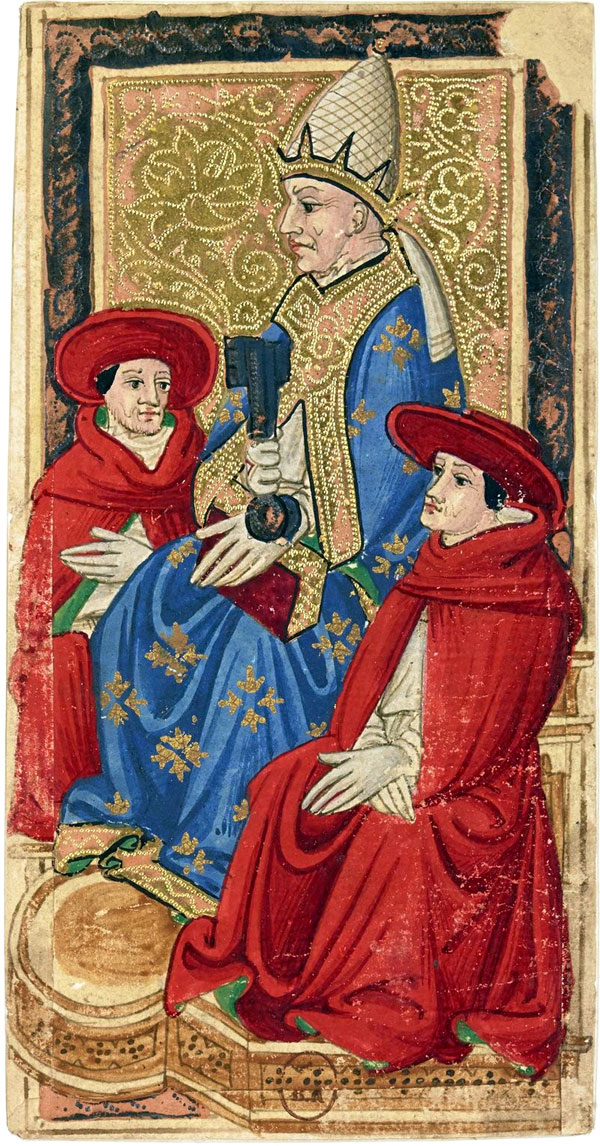
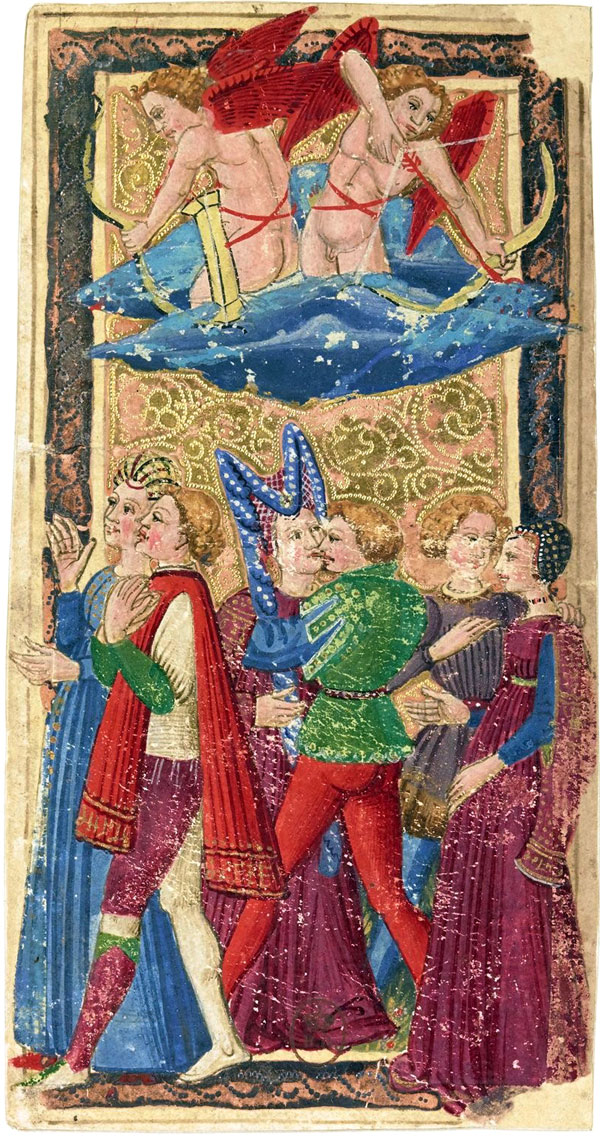
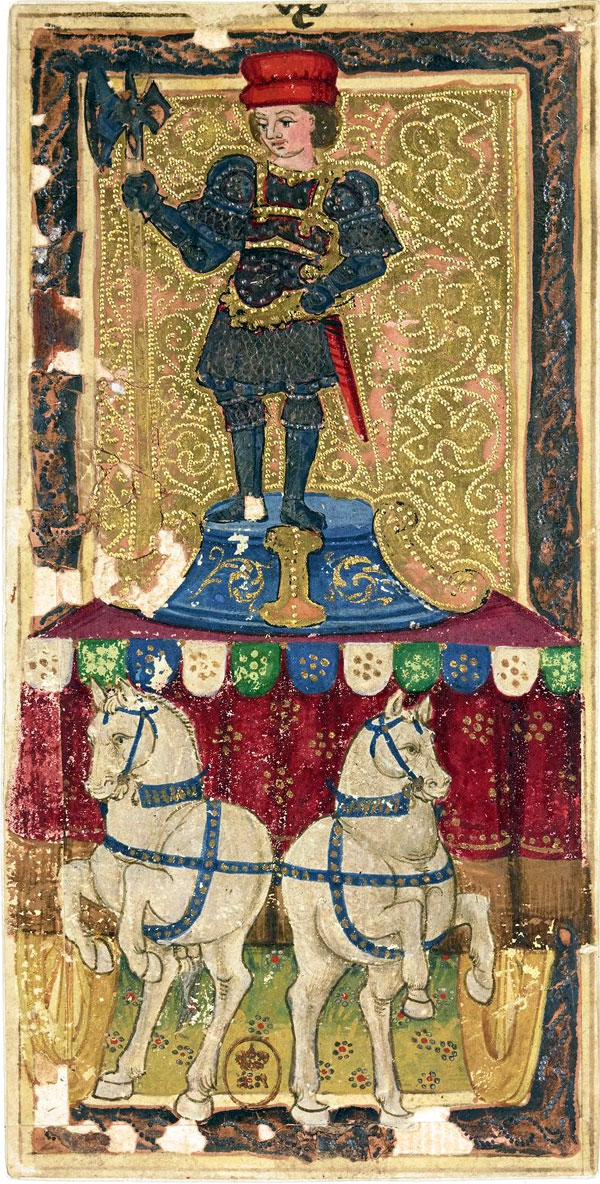
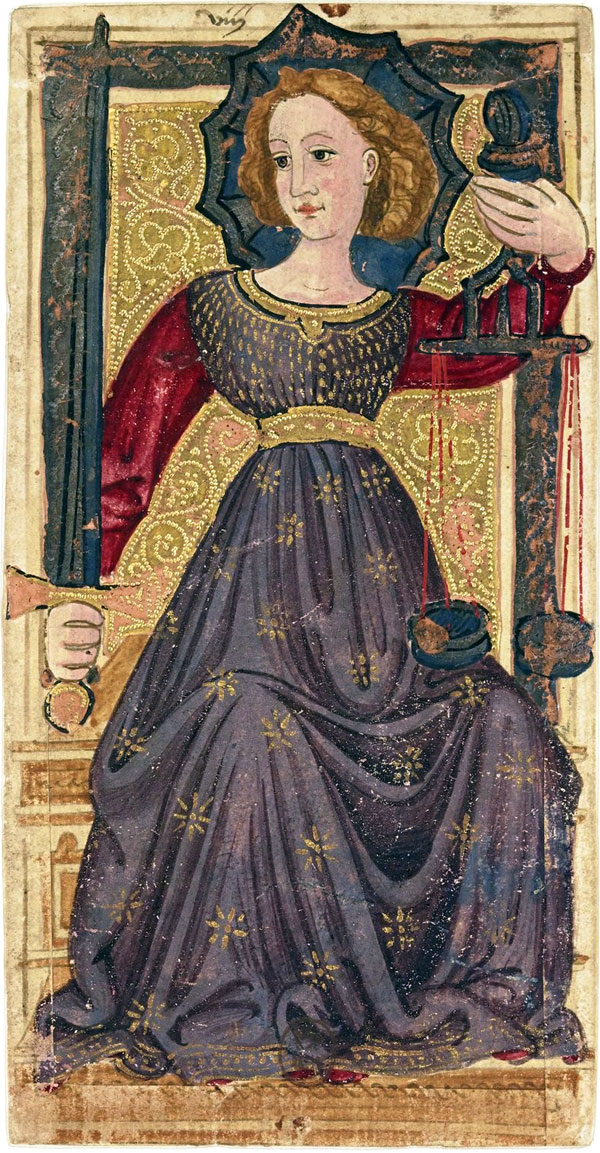
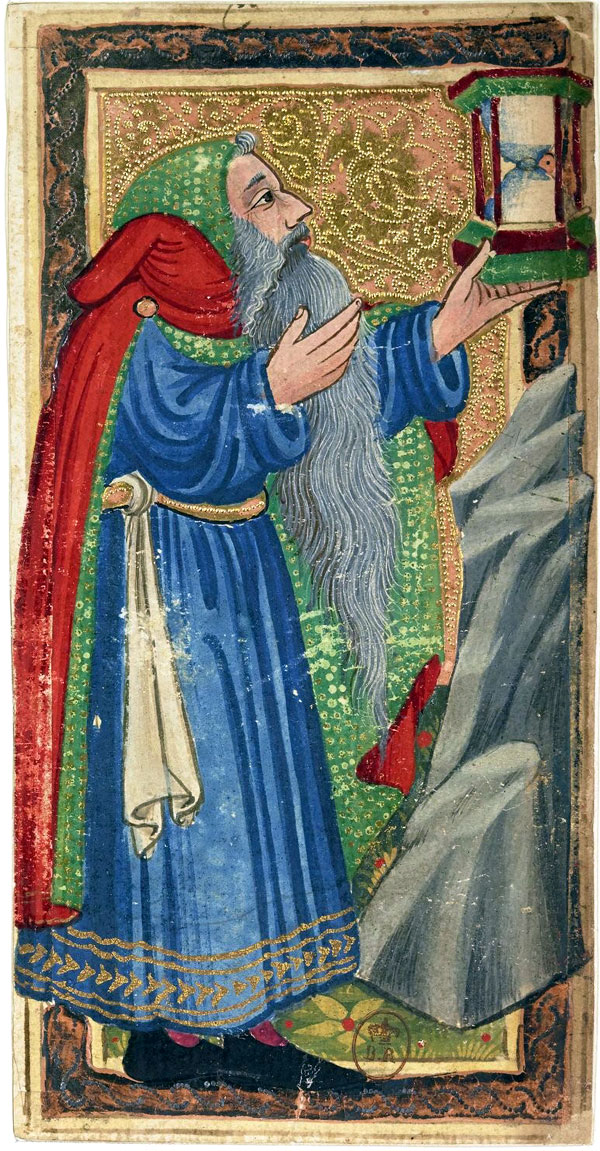
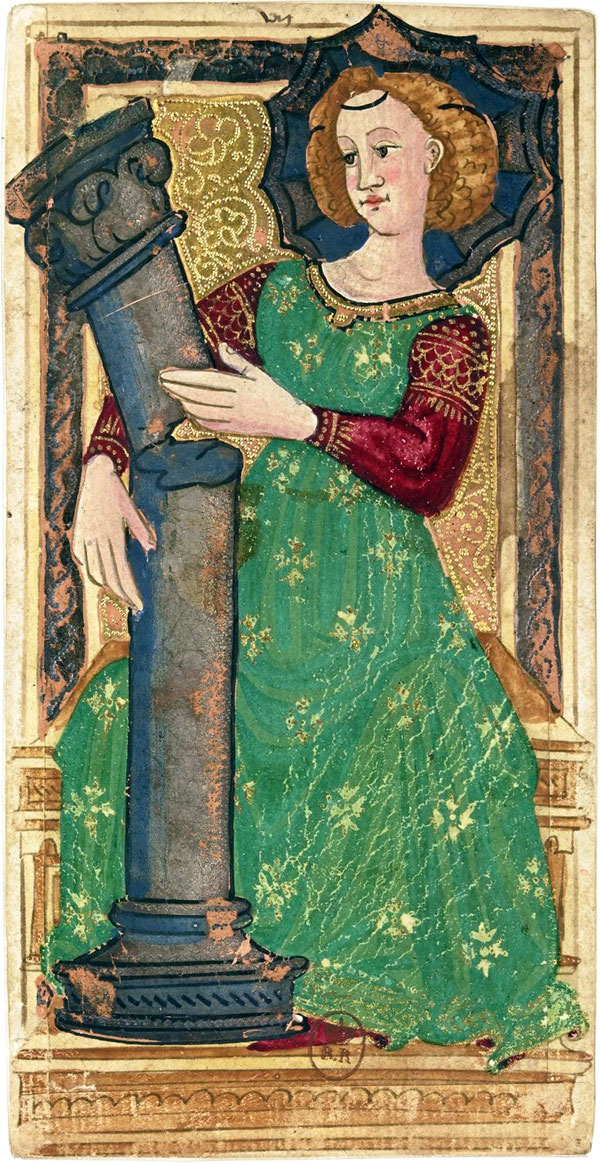
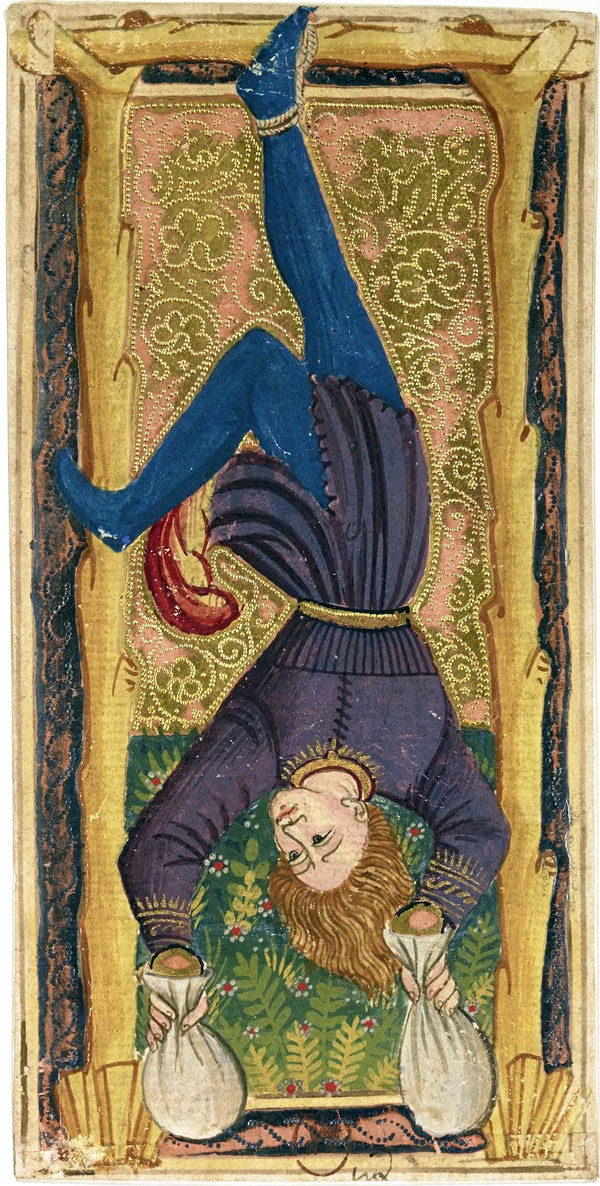
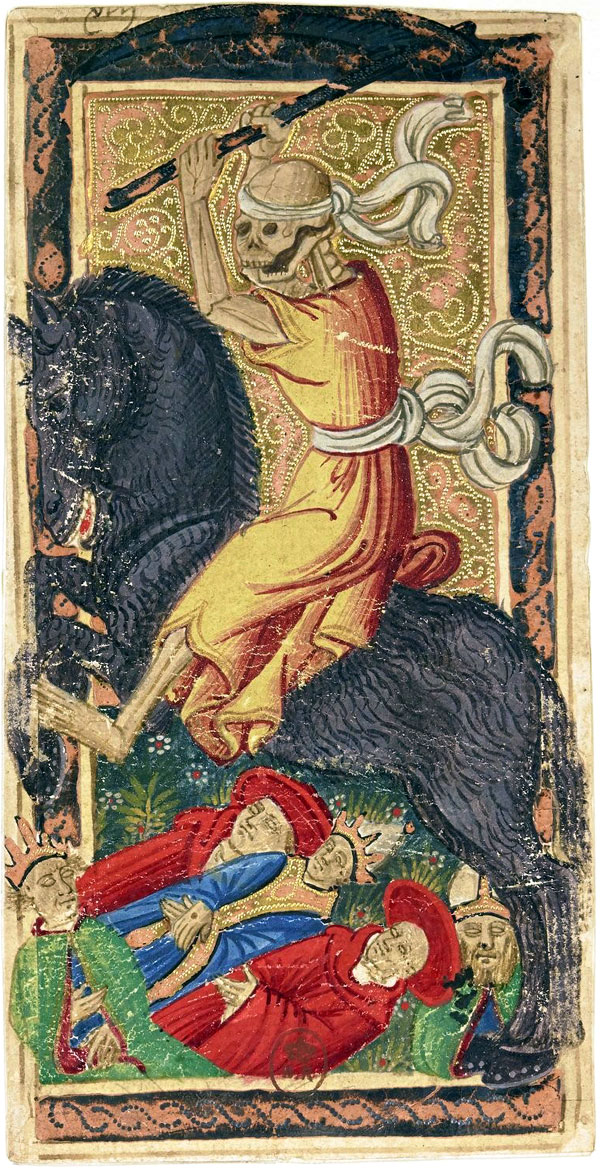
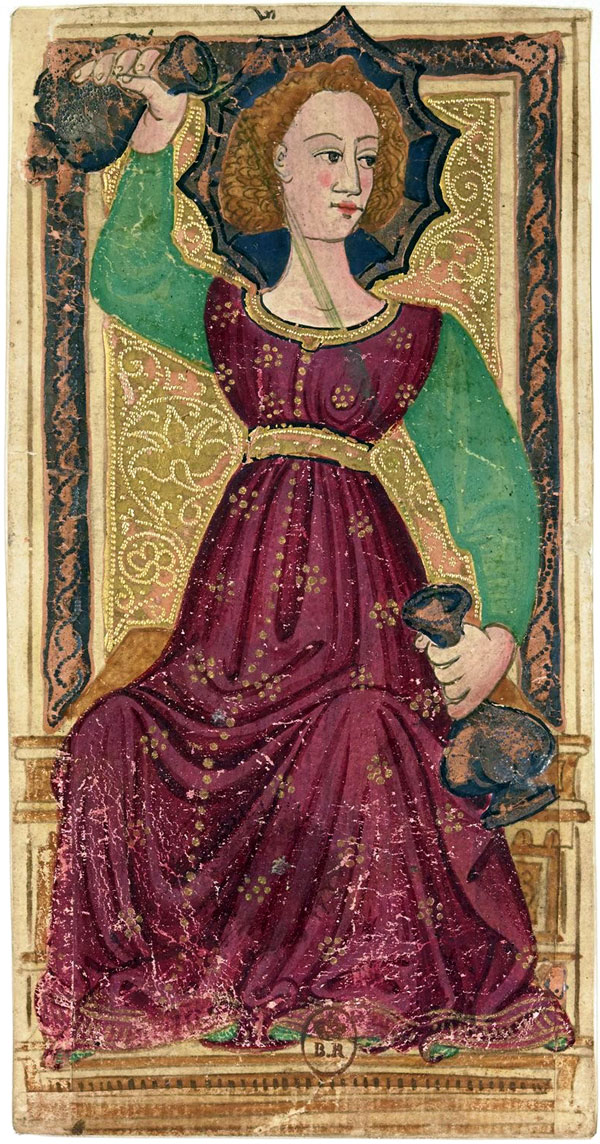
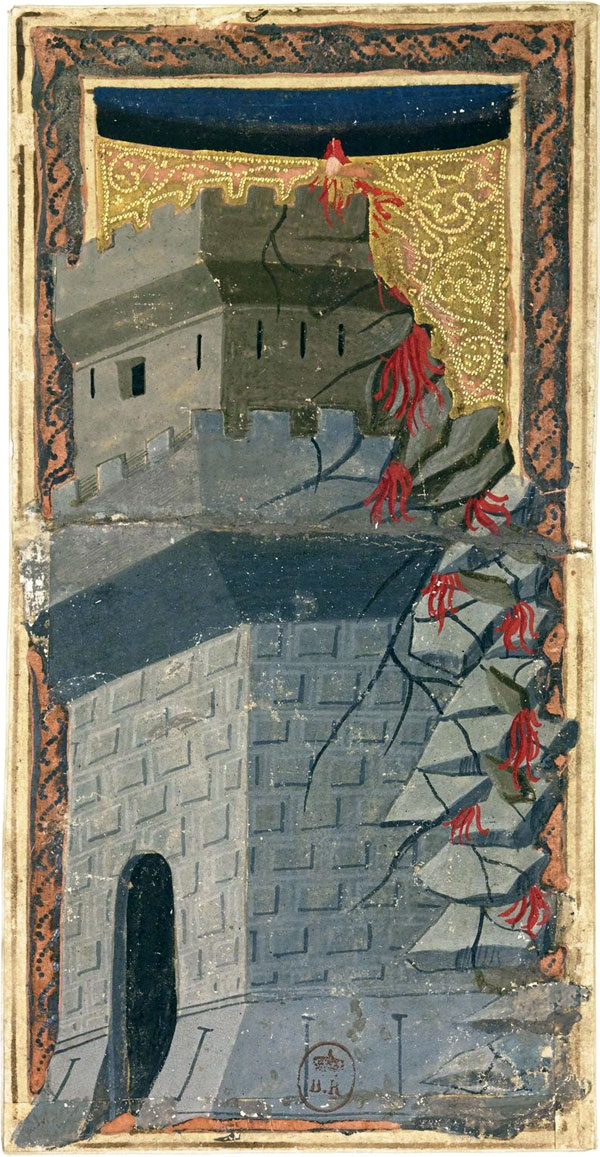
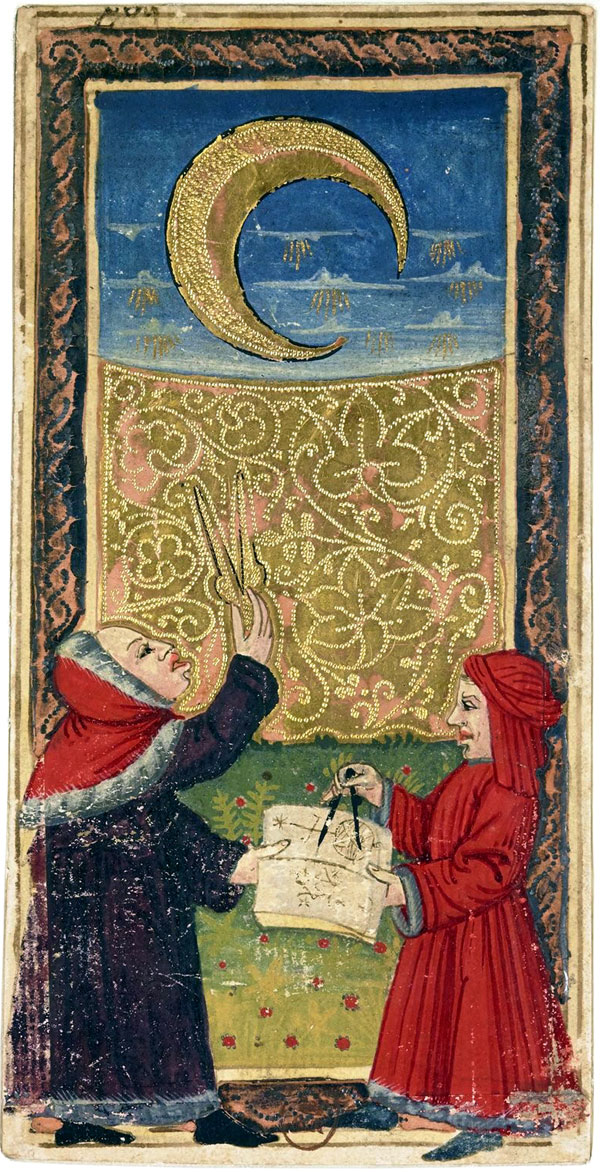
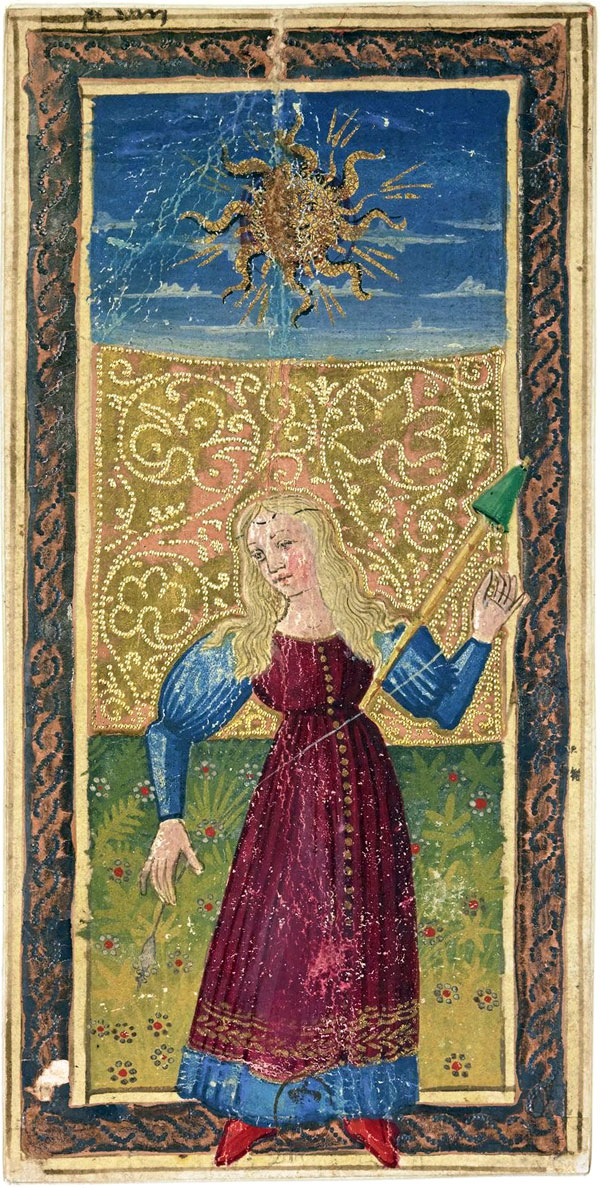
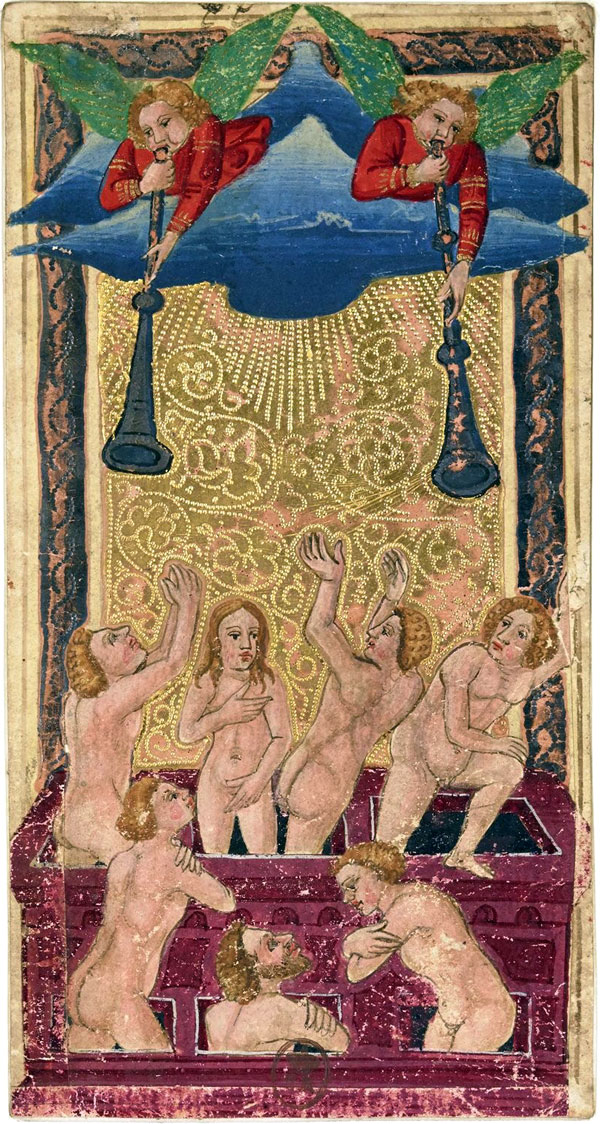
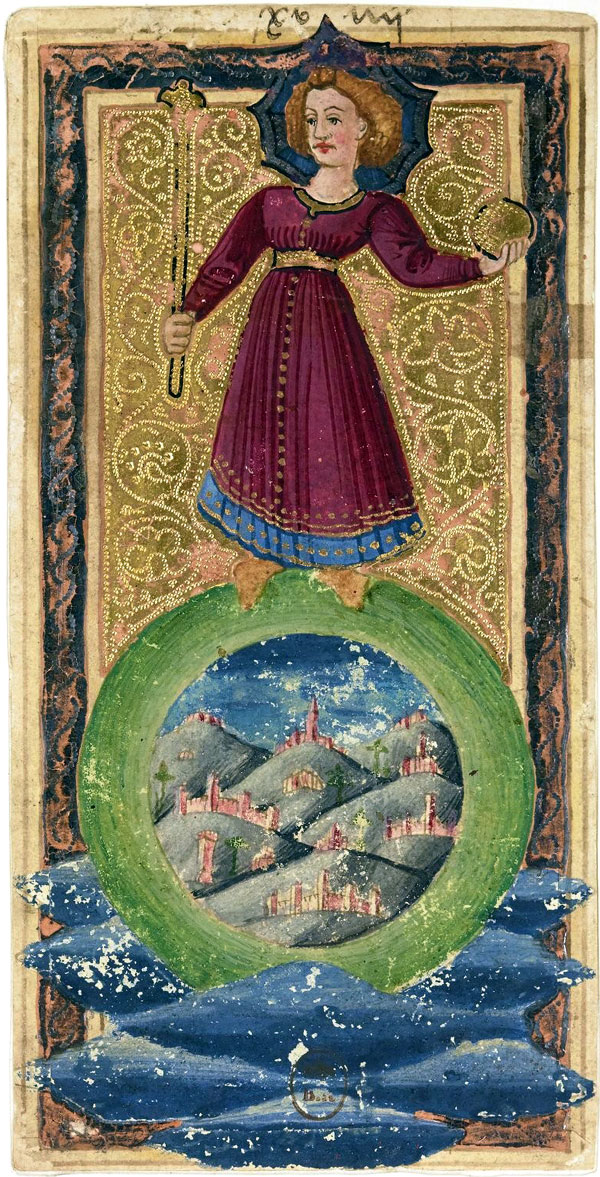
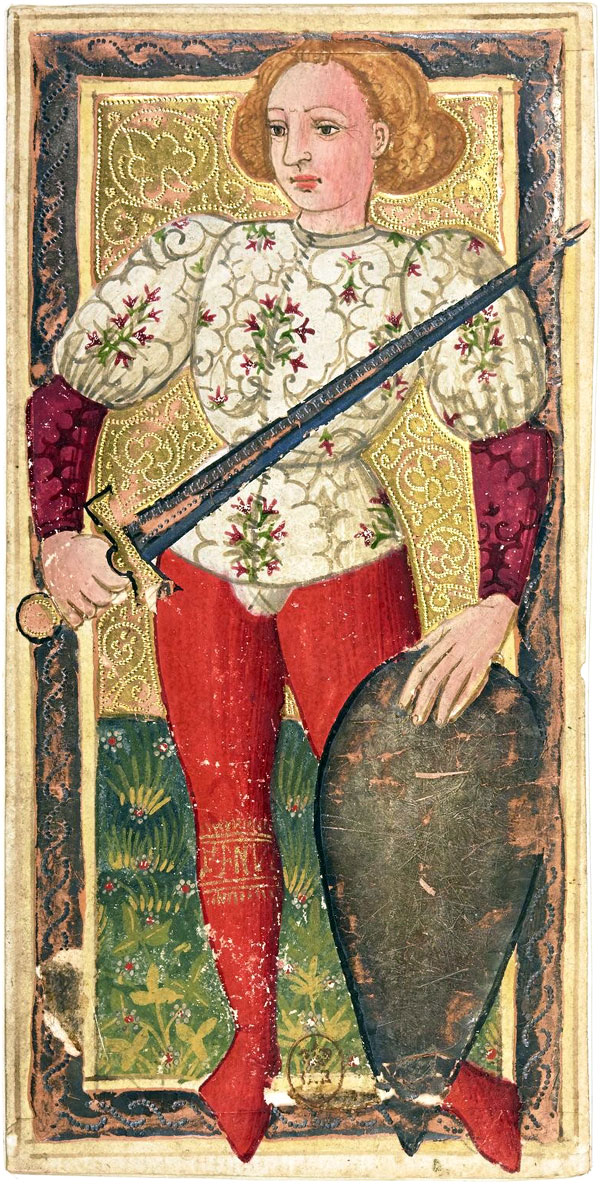
Not all tarocchi cards are of the same kind or intellectual quality, but these certainly justify the oldest description of the card pack as a 'chart-makers' game', and if we posit their use as a the sort of post-lesson exercise 'game' intended initially for the school-room, but cards of this kind later used as a pastime among the more highly educated, then content and the finer details make a good deal more sense of both the ordinary secular sort of game played by soldiers and the 'readings' which have been passed down by tradition and in some cases (e.g. the Tower as Gemini; the Star as Sirius; Perseus as Death and signifying a temporary victory), then the pack's history becomes a little clearer. On the verbal and memory games played for pleasure by the European aristocracy see Crane's book on 'Social Customs...' For the importance placed on memory in medieval Europe see Mary Carruthers' 'Book of Memory'. I'm afraid there's no single easy guide to the highly sophisticated level of astronomical reference in these few cards; it is not part of the western, but the eastern traditions. - D.N.O'Donovan.
Further References
Carruthers, M., The Book of Memory, Cambridge University Press, 1999.
Crane, Thomas Frederick, Italian Social Customs of the Sixteenth Century and Their Influence on the Literatures of Europe, New York, Russell & Russell, 1971.
Above: seventeen XV century hand-painted and gilded tarocchi cards of Italian origin in the collection of the Bibliothèque Nationale (Paris). These cards are heavily worked with burnished gold leaf and tooled ornamentation reminiscent of medieval illuminated manuscripts and Books of Hours. This expensive and laborious process was, therefore, only affordable by the wealthy. However, there are no mottoes or heraldic motifs on the cards which makes it less likely they were from a courtly milieu.
Illustrations of cards in the Bibliothèque Nationale de France, département Estampes et photographie. Public domain, catalogue.bnf.fr/ark:/12148/cb403537867►
By Diane O'Donovan
Member since January 09, 2002
Retired university lecturer. Researcher into the origins of playing cards in Europe, the internal structure of the pack, court cards, the tarot symbols, etc.

Related Articles
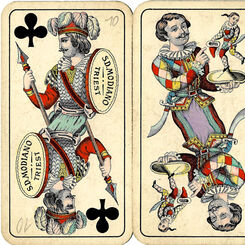
Austrian Tarock by S.D. Modiano
Modiano’s Austrian Tarock with country scenes has been in production for over 100 years.
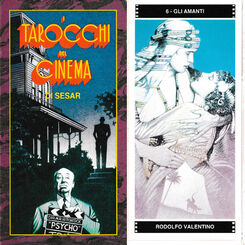
I Tarocchi del Cinema (di Sesar)
A set of Tarot trumps on the subject of the cinema, with designs by Sergio Sarri.
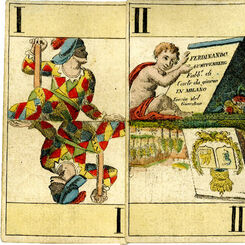
Natural History Tarocchi
Natural History Tarocchi by Ferdinando Gumppenberg, Milan.

The Place of the Fool
This paper considers three questions relating to the Fool-card in the tarot-pack.
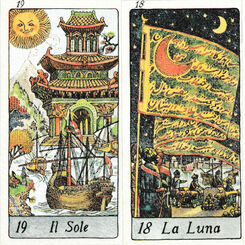
Venetian Tarot
Scenes from the history of Venice on a set of the major arcana.
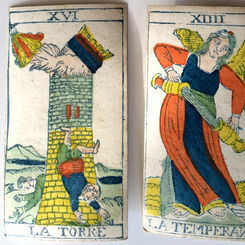
V. F. Solesio Tarot
V. F. Solesio Tarot, Genoa, mid-late 19th century.

Tarocchi di Mantegna, c.1465
The so-called Tarocchi di Mantegna (c.1465) reflect an ideological structure bringing to mind the so...
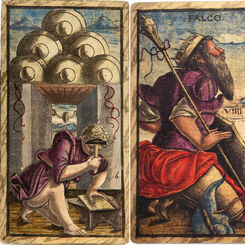
Sola-Busca Tarocchi
The Sola-Busca Tarocchi, c.1491
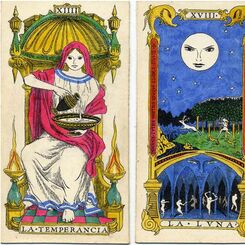
Oliver Mundy tarot
Original Tarot designs in Italian Renaissance style by Oliver Mundy.
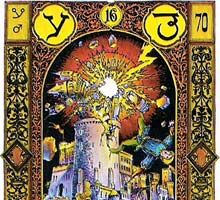
Stairs of Gold Tarot
Whilst the titles of the cards are in Italian, the Hebrew and Sanskrit letters on the Trump cards de...
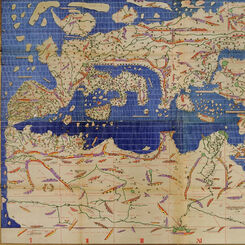
Shipman’s Guide: early card-packs and the Arcana
In late medieval Europe, among the various forms of card-sets that were tried, two were apparently f...
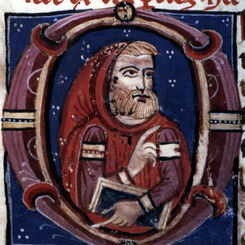
Michael Scot's rebus figure of "Juppiter" as prototype for the tarot pack's "Magus”/”Bateleur”
A precursor for the 'Bateleur'/'Magus' included in the major arcana of our tarot pack.
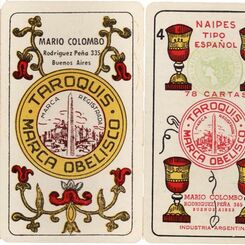
Taroquis ‘Obelisco’
78-card 'Taroquis Marca Obelisco' published by Mario Colombo, Buenos Aires, during the 1950s, 60s & ...
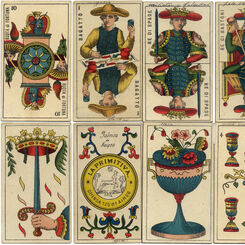
Tarocco Piedmontese by Fabrica de Naipes La Primitiva, Bs Aires
Tarocco Piedmontese by Fabrica de Naipes La Primitiva, Defensa 125, Buenos Aires c.1890.
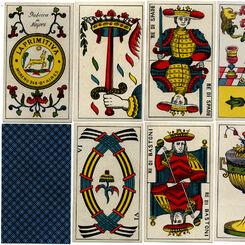
Tarocco Piedmontese, Buenos Aires c.1900
Tarocco Piedmontese by Fabrica de Naipes La Primitiva, Moreno 248, Buenos Aires c.1900

Tarots Egipcios Kier
The “Tarots Egipcios” was first published by Editorial Kier S.A. in c.1971 with Spanish titles, with...
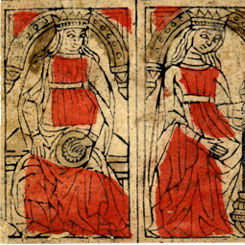
XV Century Italian Playing Cards
Cards from a pack of an early form of north Italian playing cards, with the swords back-to-back and ...
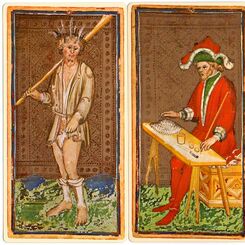
The Visconti-Sforza Tarot, c.1460
This pack of tarot cards appears to have have been made in the Bembo workshop in Cremona for Bianca ...
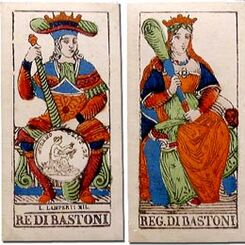
Tarocco Milanesi by Lamperti (Milan) c.1850
Tarocco Milanesi by Lamperti (Milan) c.1850

Tarocco Bolognese
Tarocco Bolognese
Most Popular
Our top articles from the past 60 days






















